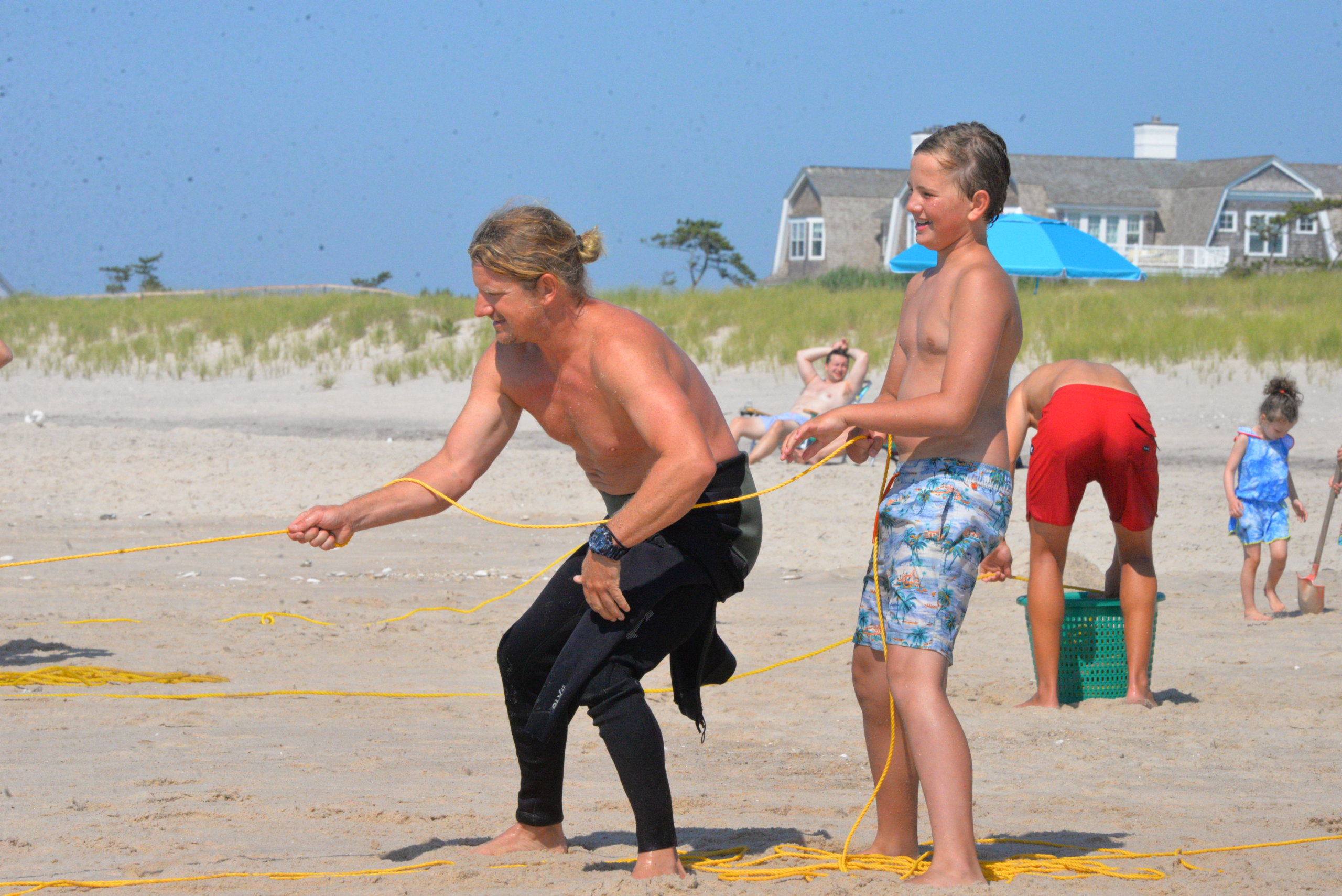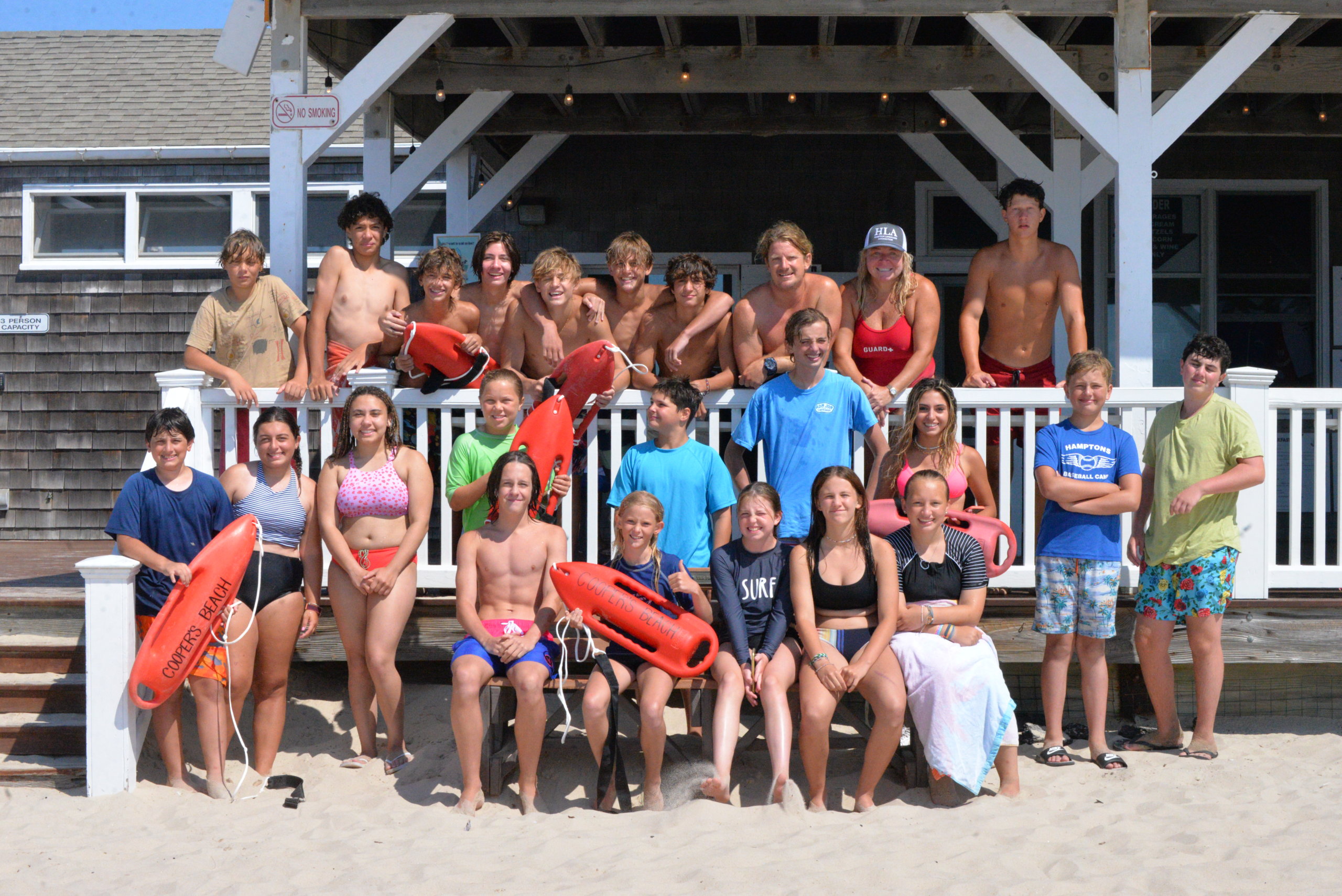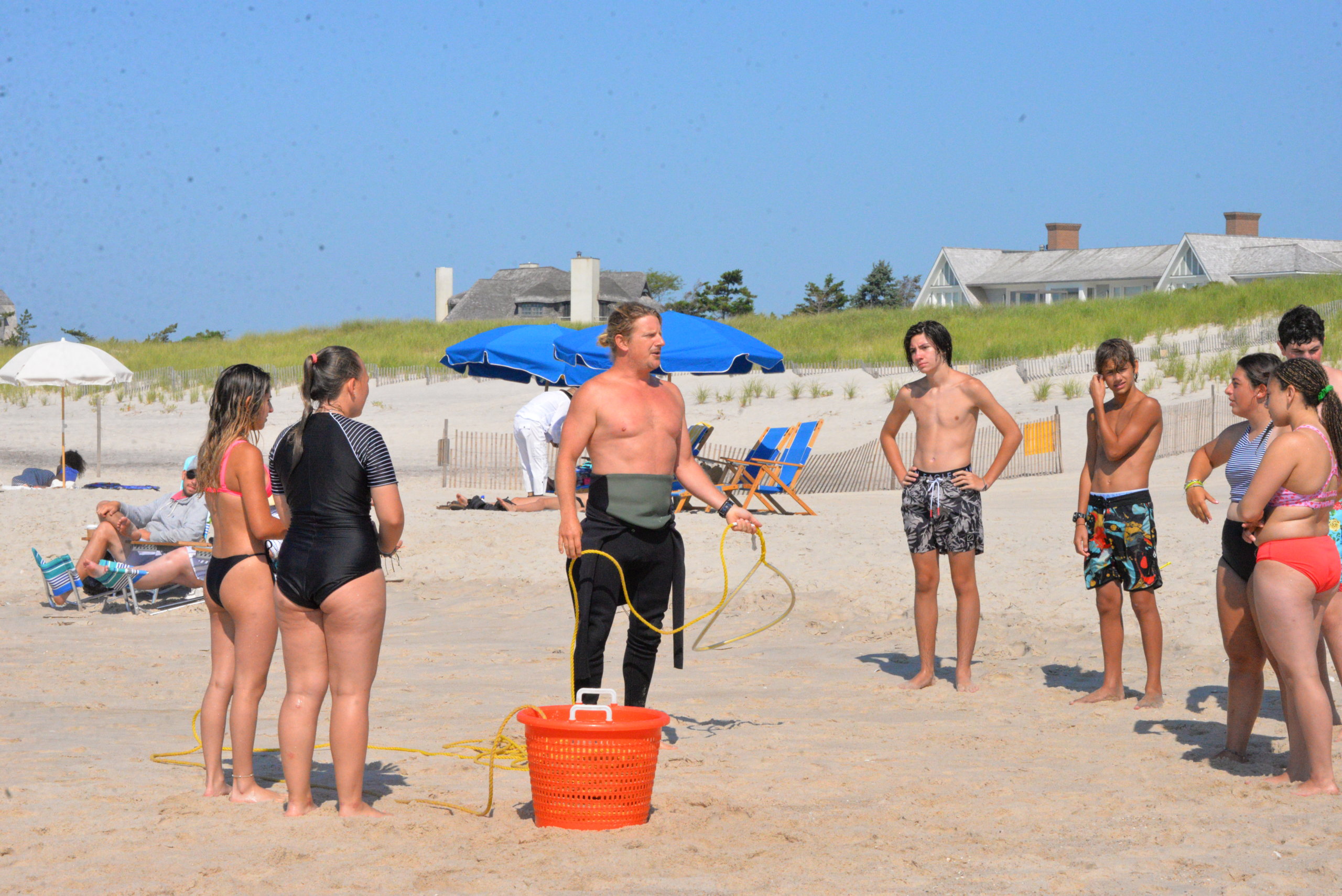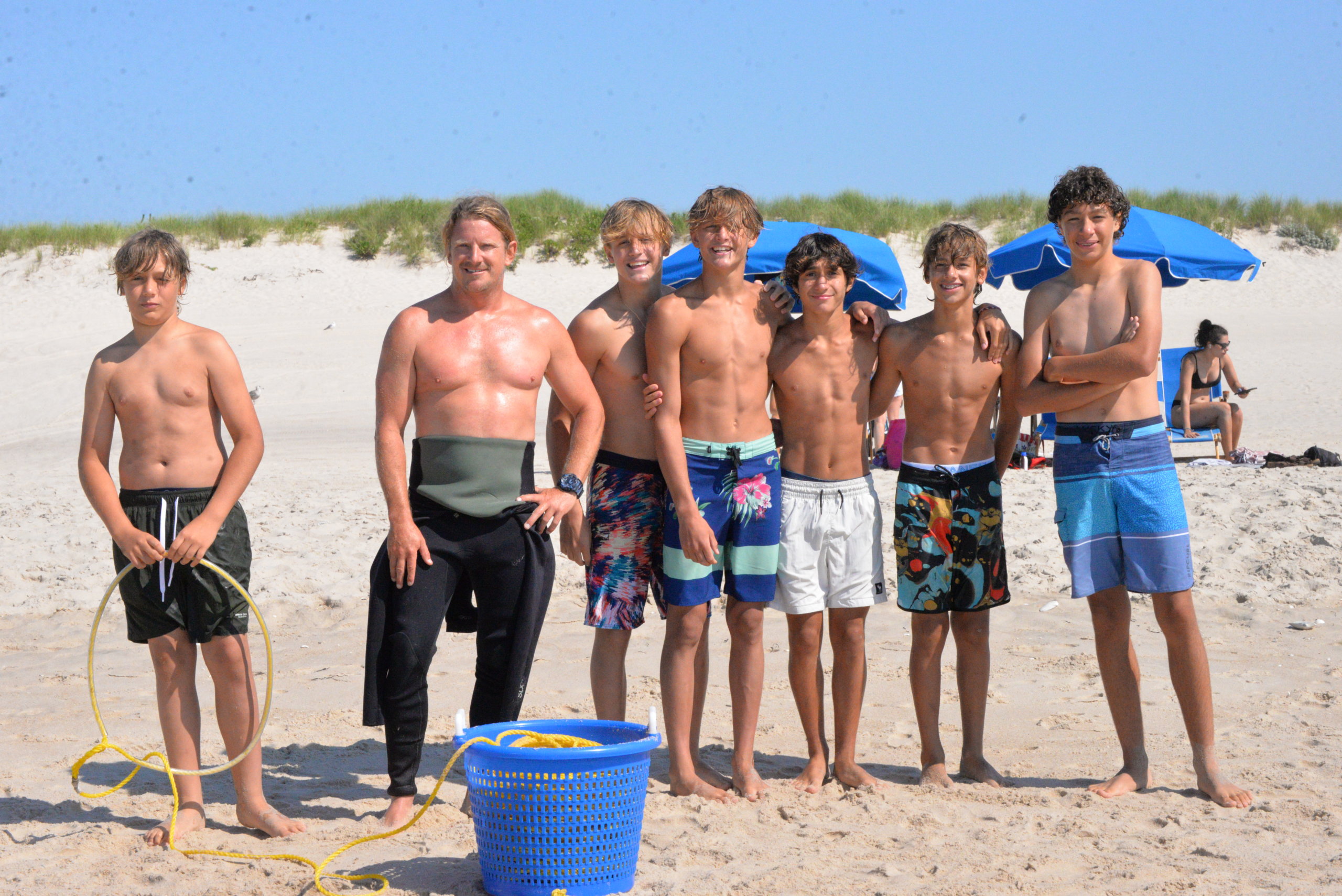Junior Lifeguard Program Quells Ocean Fears in Southampton

Brendan Regan knows what it’s like to be the kid who’s afraid of the water. The longtime lifeguard and swim instructor wasn’t always at home in the roiling surf, but he conquered his fears as a young teen, and now he and his partner, physical therapist Christine Brennan — also an experienced lifeguard and swim instructor — are showing local youths how to do the same through their Southampton Village Junior Lifeguard Program for kids ages 9–14 at Coopers Beach.
The duo launched their program last year after Brennan heard the idea suggested at a Southampton Trustees meeting and asked Regan if he’d run it with her — and they were amazed by the demand. With the help of the Coopers Beach lifeguards, Regan and Brennan — who met as swim instructors at the East Hampton YMCA — quickly built a roster of 30 kids ages 11–14 for their first summer program. Now they’re returning with an expanded scope, which will include an additional group of 15 younger students, ages 9–10.
“People signed up almost immediately, it was crazy. We were surprised. I guess people were looking for something like this,” Regan says, recalling how quickly the program filled up with a mix of both local and seasonal kids in 2021.

Regan and Brennan instruct their students using Red Cross junior lifeguard standards, and by the end of the process each kid is technically certified as a junior lifeguard by Red Cross, but it’s not a certification to move on to lifeguarding locally. “It lays the foundation for becoming a lifeguard,” Regan says, pointing out that both East Hampton and Southampton towns have cadet programs for 15-year-olds, readying them to take a test and become ocean lifeguards at age 16, the starting age for ocean lifeguards in the Hamptons.
And while Regan and Brennan’s program is definitely focused on lifeguarding skills, including saves, first aid, line work, swimming, introductory CPR and more, its true value is about building confidence, self-esteem, independence and, of course, comfort swimming in the ocean.
“I worked at beach clubs for almost 20 years as aquatics director, or head lifeguard or assistant manager, which pretty much all ended up meaning the same thing. And I was always bringing kids into the water,” Regan says. “It gets slow and boring when it gets quiet, and if you see a kid who’s curious or a parent who’s curious, and you bring them in and out of the ocean, you can just see it in their face, like, ‘Oh, man. This thing is beautiful and it’s not as scary as I thought it was.’”

Regan remembers that fear of the ocean and the absolute joy of getting over it at around age 13 — something he now helps his students achieve. “I was very, very reserved as a kid. I didn’t want to push myself, didn’t want to be in danger, never wanted to go near anything where it didn’t seem like I’d know exactly what was going on,” he says. “I remember starting to build the confidence. I remember feeling super afraid and maybe the next summer being like, ‘OK, now I’m pushing myself,’” Regan continues, pointing out that a lot of kids fear the ocean, especially if they haven’t grown up around it. “It’s cool to see the apprehension and the fear in a kid’s eyes on even a small day of waves, and you teach them how to go under a wave. Then they go under the next wave by themselves, and then you come in and, universally, they’re laughing, they’re happy, they’re excited, they’re high-fiving, they’re bragging to their parents about it.”
Last year’s group had kids of all ability levels, according to Regan, who says they teach to each student’s skills. “It’s really the full spectrum. You don’t realize until the kids are in front of you, but 11–14 is really a wide range. A young 11-year-old and an older 14-year-old are almost like two different species,” he says.

“We had the older kids who were really excellent swimmers, we felt we could push them to do the full, real version of a lifeguard save using all the equipment — the torps (torpedo, aka “Baywatch buoy”) and the lines and stuff — and then all the way down to the little 11-year-olds who were very not confident in the water at all, and really didn’t have much swim stroke technique. It’s the gamut,” Regan continues. “But definitely everybody leaves the program a couple steps up from where they entered, whether they’re kids who’ve never really touched the ocean before, to surf rats who then step it up and become almost a version of a proto-lifeguard.”
Regan explains that each day is a little different, depending on the surf, and while they push kids, safety is always paramount. “Kids show up, warm up, stretch. It’s pretty condition dependent. We always get in the water. If it’s calmer, it’ll be more endurance and more long swims out to the buoys and really doing real versions of the saves out in the water,” he says. “If it’s very rough we’ll do the land stuff and then Christine or myself will take the kids out one or two at a time and push them. The goal is to really push the kids a little bit out of their comfort zone into a place where in the end they’re better off.”
To learn more about the Southampton Village Junior Lifeguard Program, email Christine Brennan at brennan.christine@yahoo.com.



